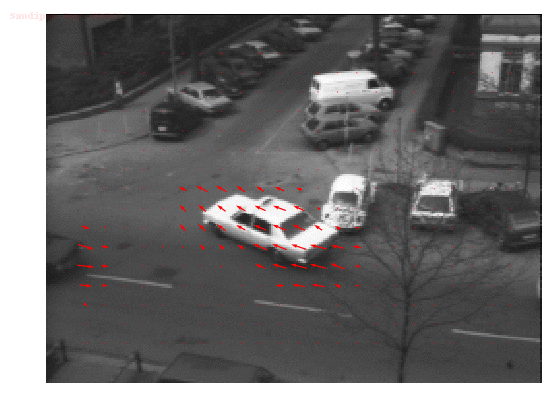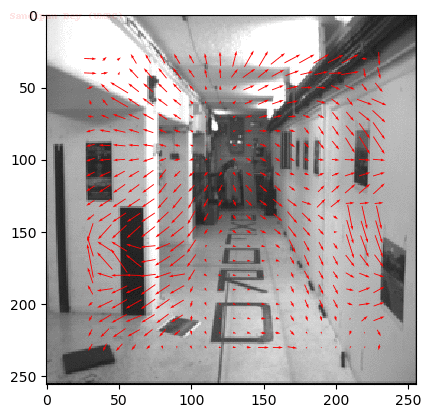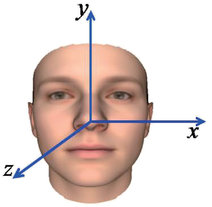Vection Sensation: Who's in Motion, Me or the World?¶
Due date: .
Download¶
Start with downloading the following VR application:
What is Vection?¶
Vection is the illusion of movement that you feel when, in reality, you're stationary. It happens when your eyes see motion (we call it optic flow) and your brain interprets it as if you are moving. For example, when you're in a train at a station and the train next to you moves, you might briefly feel like your train is moving. The same sensation, but for extended periods of time, happens in VR when you control your avatar with a joystick or controller.
Why Is It Important to Study Vection?¶
Several factors influence the illusion of motion. One factor is the selection of the optic flow: not all movements in your visual field trigger the sensation of vection. Some optic flows may not induce vection at all, while others sustain it briefly.


Certain optic flows can be so intense that they lead to feelings of dizziness or nausea. Another factor is individual differences; some people are more resistant to feeling vection or feeling sick in response to vection, while others are more susceptible. Adaptation, prior experiences, and other sensory inputs also play an important role in experiencing vection and its effects.
Understanding these factors are important to understanding how our brain processes optic flows. It is also important if we want to design realistic, immersive, yet comfortable VR experiences.
How Much Is Known?¶
It's easy to mix up optic flow, vection, and VR sickness because they are so closely connected. Optic flow can cause vection, and vection, in turn, can lead to VR sickness. What’s surprising is that it is not fully known which ones cause what. What types of optic flows cause vection? And which of these vection-inducing experiences are more likely to trigger VR sickness? These are all open research questions!
In this homework we attempt to investigate some of these questions.
If Vection Makes You Sick: The Good, The Bad, and The Worse¶
Some of the experiences in this homework can be intense, especially for those susceptible to VR sickness. If any of the provided experiences make you feel sick, close your eyes right away. Only continue if you are comfortable. If you find it too challenging to proceed, please write it down in the corresponding text box below.
Completing This Homework¶
For this homework, we ask you to experience different optic flows. You can do it by inserting one of the VHS tapes into the VCR in the VR experience you downloaded. Each tape is labeled with a number. You can go through them in any order, but be sure to identify each tape with its label number and answer the questions for each of the tapes below.
As you complete each tape we will ask you to report on your experiences with vection and VR sickness. Also try to explain why you feel that way based on what you've learned in class. Think of it in terms of the conflict between the visual system and the vestibular system. Which velocities and accelerations create the most conflict? Where in the visual field are they located?
In the final custom tape, you can adjust the optic flow parameters using the provided controls. Choose parameters that will create the most comfortable and prolonged vection. Try to also find those parameters that most reliably induce immediate discomfort or sickness.
When responding to the questions about the directions of optic flows, please use the following definitions of the coordinate axes in relation to your head.

Note: Please DO NOT complete all the tapes consecutively without breaks. After experiencing each environment, take off your headset and answer the questions related to that specific tape. Then, take a break. This will help you avoid feeling sick or nauseated.
Authors¶
Teemu Kulojärvi, Anna LaValle, Katherine Mimnaugh, and Elmeri Uotila.
References¶
- VR Sickness Adaptation With Ramped Optic Flow Transfers From Abstract To Realistic Environments, Isayas Adhanom, Savannah Halow, Eelke Folmer,and Paul MacNeilage.
- Measuring vection: a review and critical evaluation of different methods for quantifying illusory self-motion, Lars Kooijman, Stefan Berti, Houshyar Asadi, Saeid Nahavandi & Behrang Keshavarz.
- Future Challenges for Vection Research: Definitions, Functional Significance, Measures and Neural Bases, Stephen Palmisano, Robert Scott Allison, Mark M Schira, Robert Barry.
- The vection animations are taken from here.
Anna palautetta
Kommentteja harjoituksista?